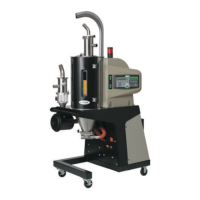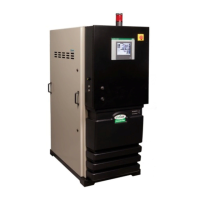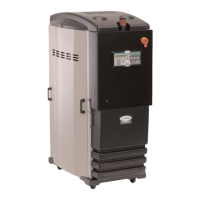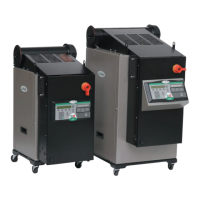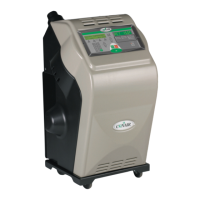(continued)
Description of Ethernet
Communications
Modbus TCP/IP is a protocol that takes the basic Modbus command set that was
originally developed for serial communications, and applies it to the Ethernet stan-
dard via TCP/IP protocol. Beginning in 2006 this protocol can be ordered as an
option on the Common Control’s dryers. When the option is ordered, an additional
Ethernet module is soldered on to the main control board of the dryer. This
Ethernet module can not be added to an existing dryer control board. Adding the
option to an existing dryer will require replacing the main control board with a
new board containing the Ethernet module. Depending on the revision level and
display type, the display beard may need to be replaced. For easier set-up, a short
length of Ethernet cable is run from the connector on the control board to an
Ethernet receptacle mounted on the control enclosure. This allows you to plug into
the Ethernet port without having to open the control enclosure.
Installing the Ethernet
Communication Hardware
The control boards are shipped with a default Internet Protocol (IP) address of
010.001.010.254. In order for your dryer to communicate with your network, this
default IP address should be changed to match the network structure used in your
plant. Changing the IP address is accomplished through the DC-2 operator inter-
face display board.
To change the IP address:
1 Enter the supervisory level password (0210). See your dryer manual for
directions if necessary.
2 Once the password has been entered, go to “Setup”>”Other”>Comm.
3 When the “Comm” menu is displayed, scroll down through the list until
“IP Addr Part 1” is displayed. This is the first octet (first three numbers) of
the IP address. For example if the IP address is 192.168.0.100, “192” would be
shown as the value in this field. If desired, change the first octet at this location.
4 Once you have entered the correct value, scroll down one more time until
“IP Addr Part 2” is displayed. This is the second octet (first three numbers) of
the IP address and may be changed if necessary.
B-2 l Eth ern et Comm un ic ations
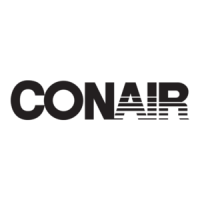
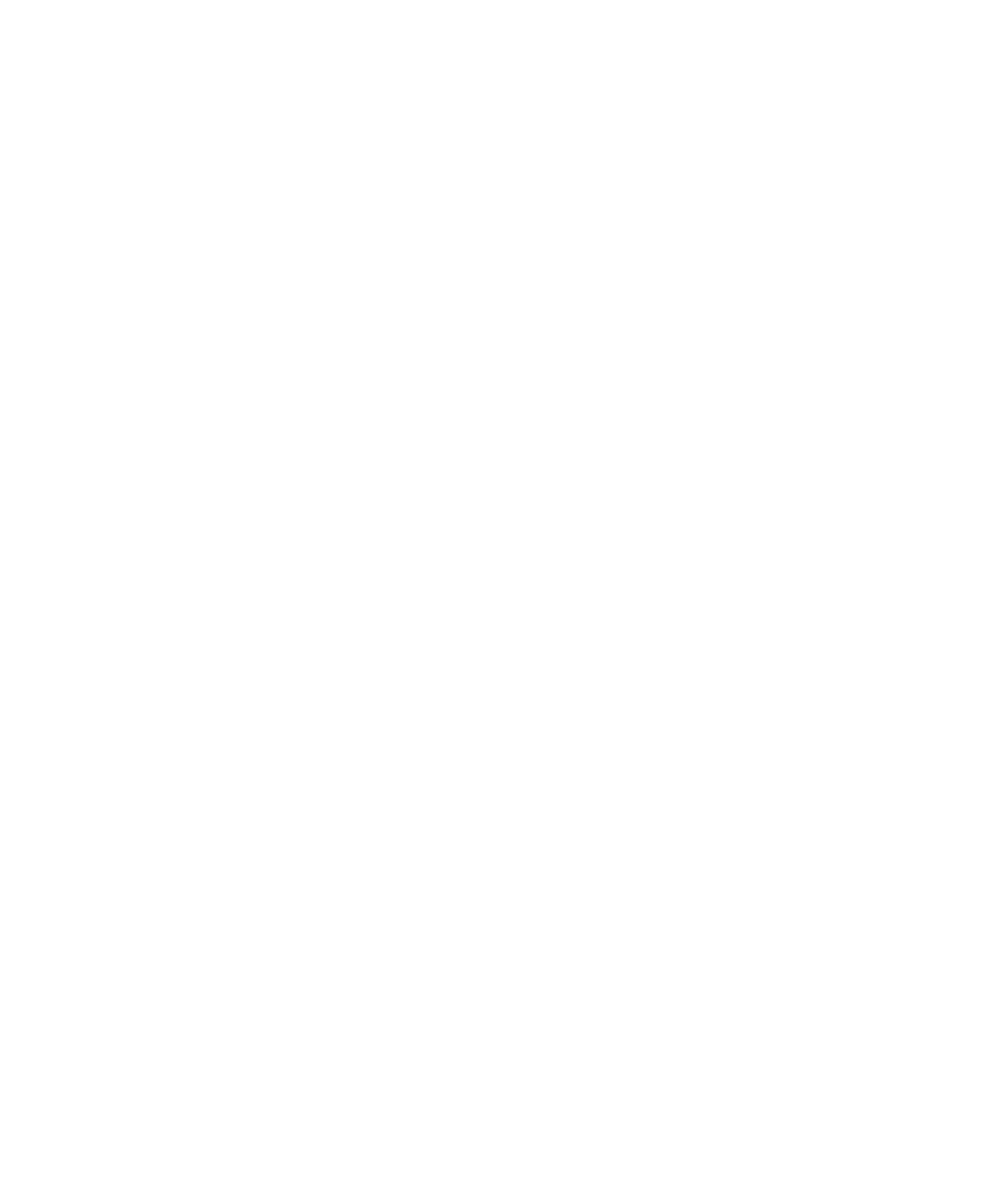